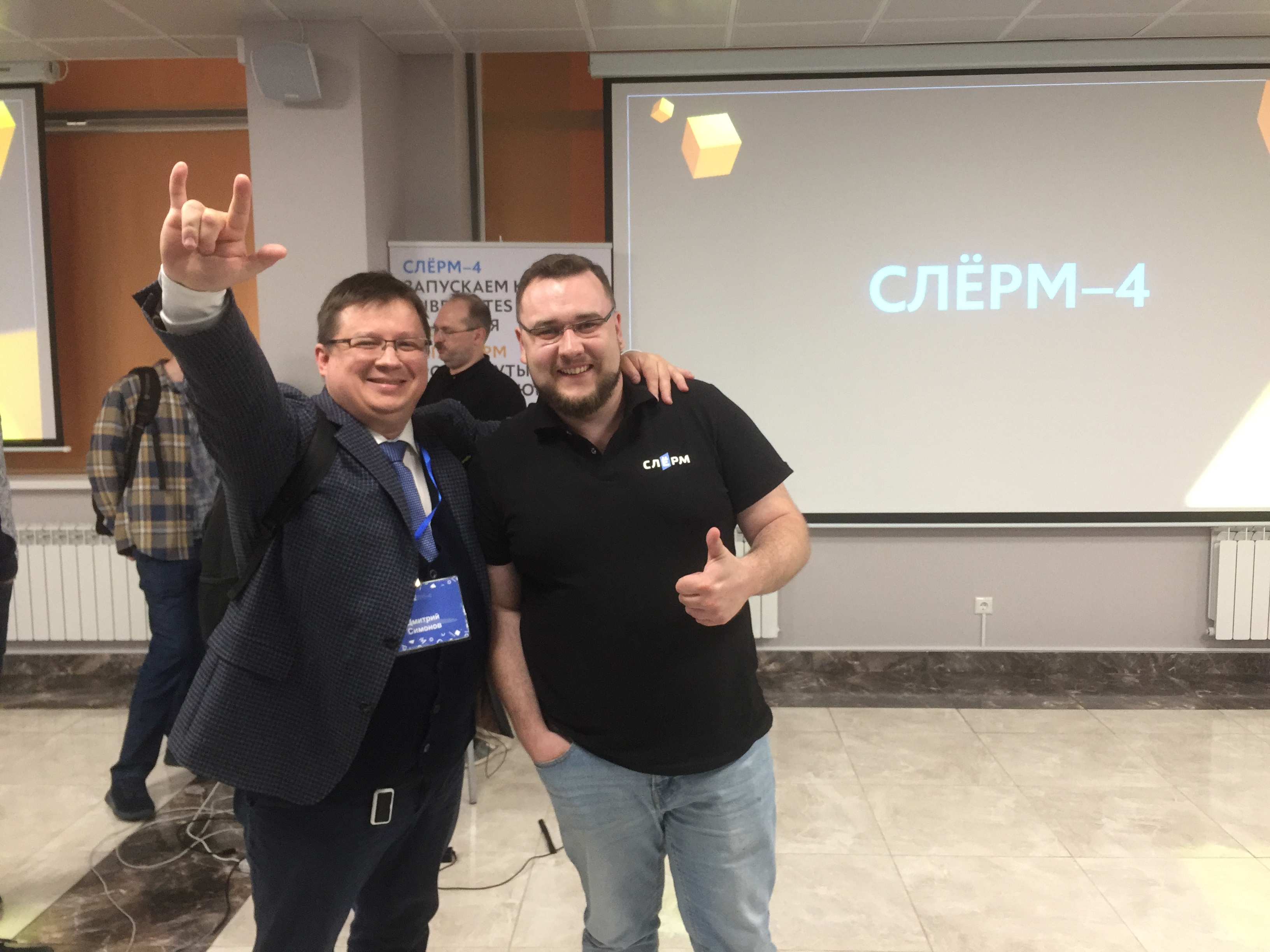Slurm - An Easy Way To Break Into A Kubernetes Theme

In April, the organizers of Slurm - Kubernetes courses - knocked on me to test and tell their impression:
Dmitry, Slurm is a three-day intensive on Kubernetes, a dense training event. It is unlikely that you can write about him if you just sit for two hours at the first lecture. Are you ready to participate fully?Before the slurm, I had to take preparatory online courses on ansible, docker and ceph.
Then, in turnips, take the code and the exact instructions, according to which already in the lectures pass each command line by line with the leaders.
- I confirm that I am ready to fully participate in both courses.And after that, hard work for 6 days (basic Slurm and MegaSlurm) was ensured in an audience jam-packed with sysadmins.
Fountains
What is the complexity of developing services in general? Here, for example, a business asks for a push mailing list! It would seem that there is a full-stack developer with a site and mobile workers with a mobile application. Task for 15 minutes. Let’s tell the business that we’ll manage in a day!
And here it turns out that the pushes have never been sent. In advance, the connection of a foreign or self-hosted push distribution platform was not performed. And this is not 15 minutes and not an hour, well, if connected in a week. Magic and sorcery began. Everything is incomprehensible, strange and unpredictable.
Development has become completely unpredictable for only one reason: they did not take into account that in addition to the layer of business tasks there is also an infrastructure layer.
If the layer of business tasks is a fountain that spews out a lot of small tasks, hypothesis testing and visual whistle-fakes, then infrastructure is its pipes. Here you need a planning horizon at least six months in advance.
Pipes for fountains
Due to the complexity and the requirement to be very attentive to details, specially trained people are involved in the development of pipes: Devops, who have grown from the most experienced admins and developers. Their work is planned and strictly consistent. They are similar to bridge builders - any mistake leads to the fact that an easy business task for 15 minutes suddenly turns into a re-planning of infrastructure for many days and money.
Slurm at the moment is the only course in Russia (of the ones I know) that teaches you how to build infrastructure in a standardized way that allows you to somehow level out planning errors. I attended Kubernetes courses, and in September I'm going to a new DevOps course.
The slurm was invented by Southbridge, an administration outsourcer who built dozens of fountains of various shapes. Southbridge is a certified KTP and KCSP (CNCF, Linux Foundation Member).
What specifically do Kubernetes courses teach?
How to organize everything that the developers did and that it does not fall?
- Work with Kubespray
- Installation of additional components
- Cluster Testing and Troubleshoot
How to authorize users (developers) into a cluster to work with the cluster itself?
- LDAP (Nginx + Python)
- OIDC (Dex + Gangway)
How to protect yourself from hackers at the network level?
- Introduction to CNI
- Network security policy
And in general safety!
- PodSecurityPolicy
- PodDisruptionBudget
We do not hide anything, - we tell in detail what is under the hood
- Controller structure
- Operators and CRD
Stateful applications in a cluster
- Starting a database cluster using PostgreSQL as an example
- Starting a RabbitMQ Cluster
How not to store numerous passwords and configs in the clear
- Secrets Management at Kubernetes
- Vault
Finger-click horizontal scaling
- Theory
- Practice
Backups
- Cluster backup and recovery using Heptio Velero (ex. Ark) and etcd
Easy roll-out to test, stage and production
- Lint
- Templating and deployment tools
- Deployment Strategies
There is also a course on steroids, everything is generally hardcore. However, after the basic course, you can already build your own fountain.
After Slurm, the participants had artifacts - a video of all days, detailed instructions for each item along with exact recipes, whose teams can be stupidly copied to build either a backup solution or a solution for test environments or something else.
That is, everything is so simple. Yes. I came for a few days, plunged into the topic, received the exact recipes and returned to the workplace to build the project infrastructure - it is simple, correct and, most important, predictable in terms of time. Magic and witchcraft are over, it remains just to work.
What is the result?
At the end of the race for a few days there comes a feeling that real serious projects are built almost by the devops themselves. And the amazing thing is that all the material covered is understandable, I play it already on my own servers every day.
Fortunately, the whole audience moved to the chat room of the cart, where even after many weeks there is life.
What's next?
Organizers are preparing Slurm Devops in the fall, I'm already getting ready. I will write about this soon in my tehdir channel in the @ctorecords cart .
